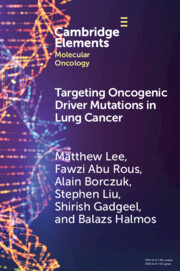Element contents
Targeting Oncogenic Driver Mutations in Lung Cancer
Published online by Cambridge University Press: 12 January 2023
Summary
Keywords
- Type
- Element
- Information
- Series: Elements in Molecular OncologyOnline ISBN: 9781009336123Publisher: Cambridge University PressPrint publication: 02 February 2023
References
- 2
- Cited by

